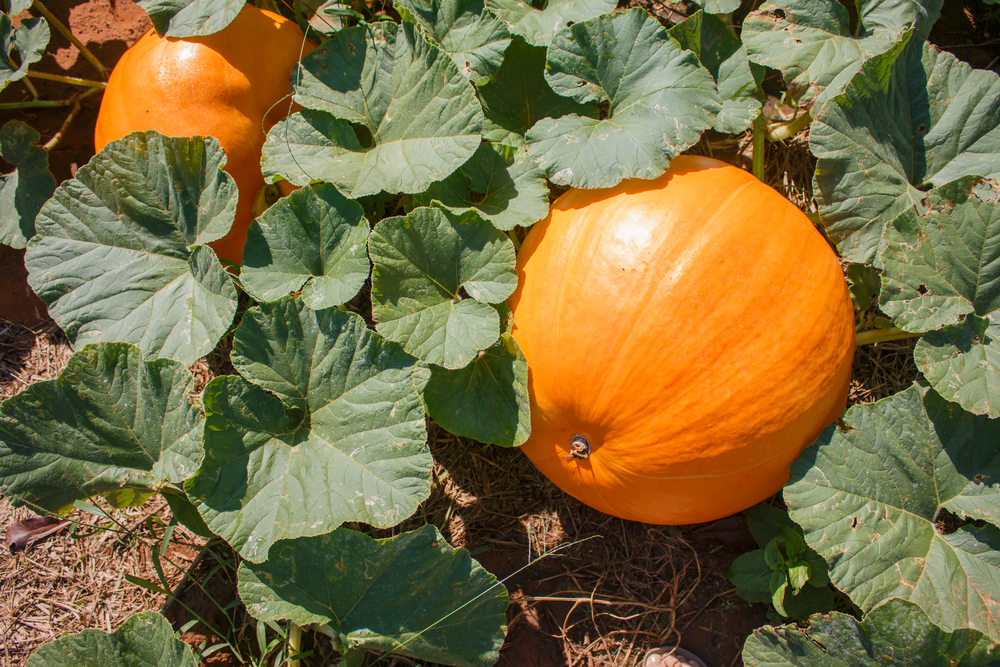
Pumpkins, Fall’s Golden Globes
On a lark, I bought a couple of pumpkin plants this spring and planted them in a raised bed. I forgot about them until a couple of weeks ago when I spied two telltale orange globes. It brought me back to my youth back in Illinois farm country when the local Del Monte farms were hauling wagon loads of pumpkins down the roads to the processing plant where they were processed into cans.
Given my upcoming harvest, I’ve got to come up with some recipes. That shouldn’t be too hard; pumpkins are among the oldest known domesticated plants, first grown in Mexico as long ago as 7000 B.C. They spread all round North America together with maize (corn) and beans before Europeans began settling. Today, some 40 percent of the U.S. crop comes from Illinois and is processed by Libby.
But I have real pumpkins, and I’d like to see what we can make of them – something other than pie or another baked dessert. After all, pumpkins and their winter squash relatives have become parts of cuisines around the world – a quince and pumpkin ratatouille in North Africa, rabbit or lamb with pumpkin and mustard in the U.K., pumpkin stew in Ethiopia, pumpkin curries in Southeast Asia, and beef and pumpkin stew in Spain. The fruit, which is more than 90 percent water, is also an excellent source of vitamins A and C. The flesh, which is somewhat fibrous with an earthy taste, is used in both sweet and savory dishes. Many cuisines pair it with pork. Native Americans often roasted whole pumpkins packed with a stew of bison, venison, or elk with beans and root vegetables.
As for the early European settlers in America, that first pumpkin dessert was probably simply a whole pumpkin with the seeds and pulp removed, then packed with fruits and nuts and baked over a fire. Later, they might have substituted eggs and cream to make a custard pudding inside the pumpkin.
I’d like something new with a little different flavor profile – taking some ideas from other cuisines. It’s tempting to try one of these pork and pumpkin recipes, and it’s too bit early to start soup season. People tend to shy away from cooking pumpkin because it seems complicated due to all the seeds and pulp. But it’s easy enough to clean them out; then just slice the pumpkin into manageable pieces and roast them on a baking sheet. And the skin is edible, so you might be able to get away without peeling.
This week, I’m starting with a pumpkin curry. It has the elements of a distant cuisine, along with some unusual ingredients that should produce some explosive flavors. In addition to pumpkin, this curry dish makes use of sweet potato and coconut milk. To provide a kick, hot chilies are mixed into the aromatics of garlic and chopped onion. The recipe recommends serving it over rice topped with an earthy coconut sambal.
And I’ll still have some pumpkin left over for other dishes – maybe a bean pumpkin and sausage casserole or a quince and pumpkin ratatouille. As for the rest of the pumpkin, once I’ve removed the seeds and pulp and roasted it in the oven, I’ll can freeze it for a host of potential meals over the winter.
From your email, please click on the headline to view the blog and photo on the website. You can log in and comment at the end of the blog to share your thoughts and start a discussion, or suggest a topic for Farmboy in the Kitchen.
If you’d like to share the blog, click on the Facebook icon or one of the others. Thanks!





2 Comments
Chuck Kennedy
Nice article. I think we’ll try a little pumpkin.
Greetings from Quebec City.
Chuck & Anne
Tom Stites
At the Helmand, an Afghan restaurant in Cambridge serving fine food for three decades, pumpkin is served as part of at least half the items on the menu (maybe my memory exaggerates, but if so not my much). I made inquiries, and they cook with small sugar pumpkins rather than the pie pumpkins that dominate American gardens. I love Helmand’s food.